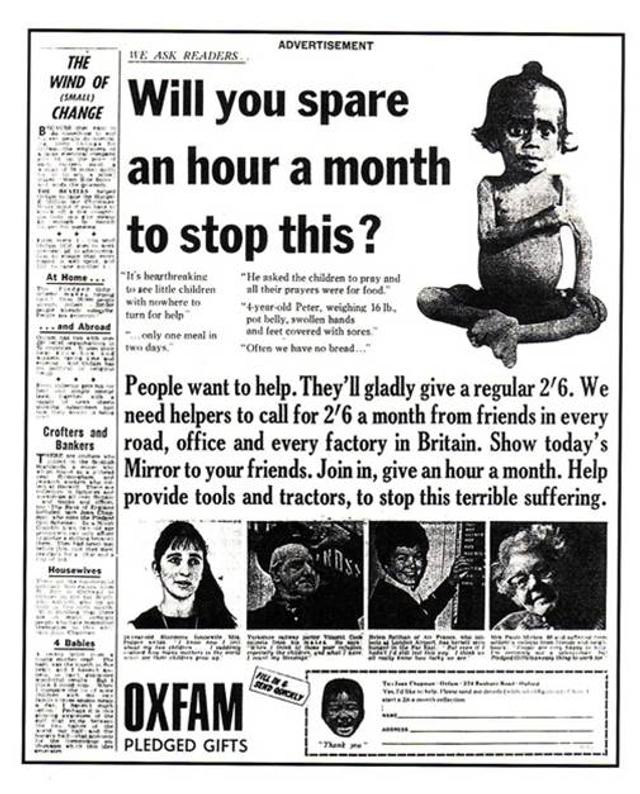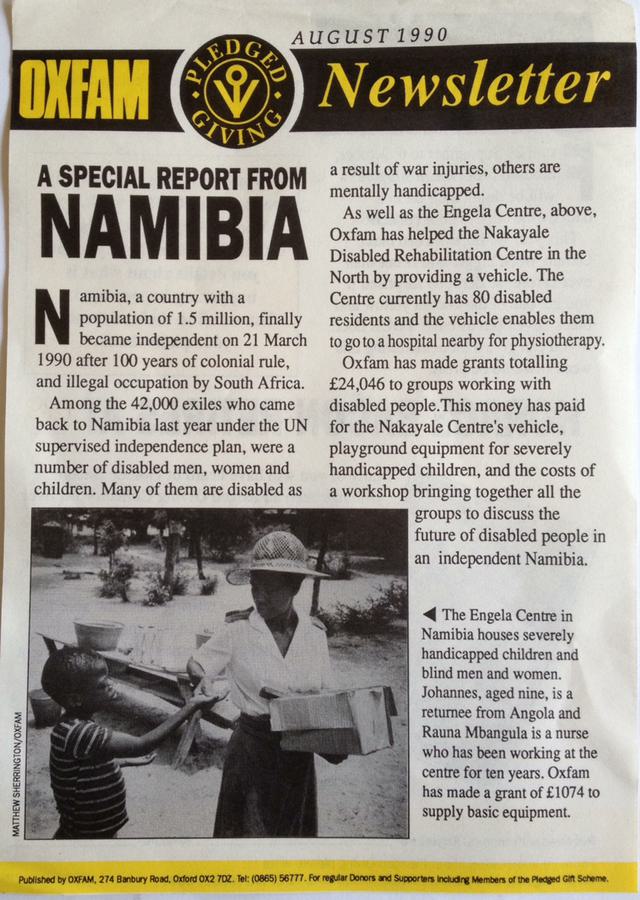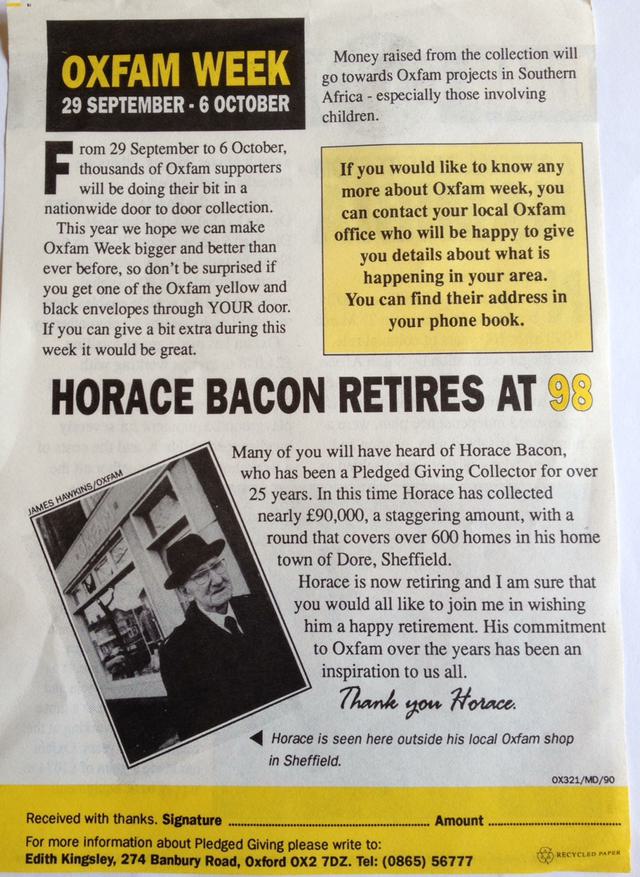Oxfam pledged gifts
- Exhibited by
- Matthew Sherrington
- Added
- September 15, 2015
- Medium of Communication
- Target Audience
- Individual giving/community
- Type of Charity
- Country of Origin
- UK
- Date of first appearance
- 1960s
SOFII’s view
Imagine trying to raise funds without the technology and variety of ways we have at our fingertips? We fundraisers nowadays are so lucky. We have to use these tools wisely to make sure that our donors continue to want to give us the means to carry on with our great causes.
Summary / objectives
Oxfam’s pledged gifts scheme involved volunteers, recruited through the press, collecting regular small donations from friends and neighbours, door-to-door. It adapted the door-to-door model used for catalogue sales and insurance premiums.
Background
Many years ago Oxfam GB succeeded in getting over 300,000 people to make regular donations. This was in the days before:
- Databases and the means to do mass direct mail cost-effectively to attract new supporters and then communicate with them.
- £2 a month made regular giving the norm it is today.
- Teams of professional fundraisers recruited supporters on the street or door to door.
- Telephone fundraisers called people to upgrade or convert one-off donors to regular giving.
- The internet and platforms like Just Giving made it so much easier for people to ask their friends to give to their sponsored this that or the other...
Oxfam inspired all those people through the pledged gifts scheme. And it started with a press advertisement asking not for a donation every month, but an hour.
Special characteristics
Oxfam’s pledged gifts scheme was about individuals asking their friends and neighbours to commit to making a regular contribution and going round to collect it. Door-to-door salesmen were commonplace then. It was how insurance premiums were collected, coal, milk and other services delivered and paid for. When I was a kid in the seventies that was how we raised money for the Scouts, doing bob-a-job, or got sponsorship for swims for the local hospice.
Volunteer collectors were recruited through the press, ‘give an hour a month”, and they asked their friends and neighbours for 2s/6, or 12 ½ p after decimalisation, which is just over £2 in today’s value.
At its peak 26,000 volunteers were collecting regular pledged gifts from 300,000 people. In 2001, 35 years on from the heyday, there were still over 600 pledged givers, contributing over £50,000 a year; six of them collecting and passing on to Oxfam over £500 a year.
The scheme must have dried up once recruiting volunteers was no longer the most cost-effective use of those press-ads and as direct mail started taking off. But before the decline, Oxfam had developed the Oxfamily Box. Six million of these were delivered by volunteers to homes and the householders – and their visitors – could put their loose change into the box when they wished. They sent the money to Oxfam – with their contact details – from time to time. For more information click here.
Influence / impact
Pioneer fundraising. Written up in Harold Sumption’s 1995 pamphlet Yesterday’s Trailblazing and Pointers for Tomorrow.
Test details
Harold Sumption describes paying attention to the length of time collectors kept collecting – on average three and a half years. However, when Oxfam tried to recruit volunteers through tabloid papers, where shopping catalogues found their market, they stuck at it only six months, making their efforts unviable. Over time, recruiting volunteers to go door to door declined in effectiveness.
Merits
It was pioneering stuff, ahead of its time in so many respects.
 It’s the picture not the frame
It’s the picture not the frame
 View original image
View original image
Also in Categories
-

















